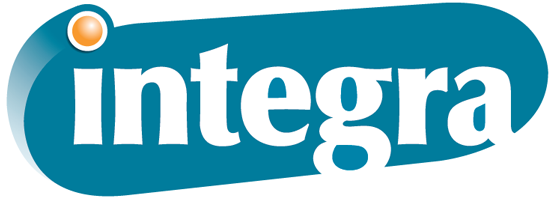Hard vs Soft Print Proofs: Physical vs Digital Samples and How to Decide
October 28th, 2023 | 7 min read

When you work with any print house or print management company to come up with your business’s marketing materials, the proof process should be built in as one of the critical steps. You need to see a copy of your prints to make sure it looks and feels as expected. It’s an even more crucial stage if you’re in a marketing department and working under a manager or company owner who needs to give their final sign-off.
So how do you decide on which type of proof is best for you? And is it ever worth it to opt for a hybrid proofing stage with both physical and digital copies to look over and show your team?
In this article, we’ll lay out the pros and cons of both hard and soft proofs. We’ll also cover hybrid proofs and how to determine which type is right for your project.
At Integra Graphics Synergy, we prepare and send out proofs to dozens of customers per month, so we’ve become quite good at determining the right kind of proof for each type of customer, company and job.
Once you read through our points below, you’ll be quite good at it too!
Pros of Hard (Physical) Print Proofs
For the sake of an example, let’s say you’re deciding on your print sample type with Integra as your printing partner. Getting a copy of your printed piece dropped off by Integra, picking it up at our Lancaster, PA headquarters or receiving it via snail mail will provide a number of undeniable benefits, including:
- Unmistakable clarity in what you can expect: There’s no misinterpretation of a physical proof. You can hold the piece in your hands, see the colors with your own two eyes and turn it over or flip through it to see the front and back of every page. In other words, you’re having the same experience your customers will have when they pick your catalog up or flip through your published book.
- Clearer demonstrations to teammates and higher-ups: Sending a digital file might be simpler, but when you’re working on a complicated project — or trying to appease a CEO with impossibly high standards and hawk-like attention to detail — you can’t beat the experience of placing a physical copy in their hands.
- Lower stress about the final product: Mistakes and misprints can still happen after a physical proof approval, especially on a small number of individual items in a bulk order. But knowing you’ve seen and felt what the final product is meant to be is one key reason you might choose hard proofs. You’ll know exactly what your printer is aiming for on every copy, and you can rest assured that there were no missteps in your planning or design stages.
- User-friendly formatting: In today’s technology-driven time, most people in the working world know how to open emails and access attachments. But when it comes to an ink-to-paper printed copy, there’s nothing quite like physically handing someone the pages to flip through, ensuring they get to the review and seeing their reaction face-to-face. What’s more, if paper type is an integral part of your approval and you need your pages to look and feel a specific way, you may want to opt for the tactile experience of holding the sample.
Cons of Hard (Physical) Print Proofs
Every decision has some drawbacks, and physical print proofs are no different. They do well in lots of situations, but some less thrilling factors to keep in mind include:
- Extra wait time before you can review: When a project comes with a time crunch, we usually recommend digital proofs. They can be sent to you with the click of a button, and you won’t have to wait for a full print or delivery before you start looking at your files.
- A more difficult and time-consuming sharing procedure: An email can land in hundreds of email inboxes in a matter of seconds. Walking around your office building with a newly printed catalog, on the other hand, inherently takes some time. If you need to show your proof to numerous people around your building, it may be a good time to consider digital proofs. However, if you just need the boss and vice president’s approval, this time sink won’t factor in nearly as much.
- A larger time lapse before the start of your print project: In some cases, hard proofs need to be sent back to the printer before your project can officially commence. They’ll create just one or two physical copies of the product, ship them to you, then wait to receive them back before basing their work on the signed and accepted proof. That means waiting for snail mail going both ways, which can take a few extra days. Find out whether this requirement applies before choosing your proof type. Note: If you’re local to your printer’s headquarters, you may be able to shave time off your proof process by picking the proofs up rather than having them put through the mail.
- Loss or damage potential: With a physical catalog, book, pamphlet — really any kind of printed copy you decide to get a hard sample for — you’ll need to take extra precautions to keep the materials in good shape. In the case that your printer doesn’t need the proofs back, you can let go of a little bit of the stress here. But if you plan to show a number of people, you still want to keep your project sample clean and free of damage so they can focus on the prints and not, for example, a cluster of coffee stains.
Pros of Soft (Digital) Print Proofs
Next up: Digital print samples. What’s great about them?
- Rapid receipt: When printers don’t need to send a physical copy of your proof, they can move you through the proof process a few days faster. Not only can you avoid waiting for the full print process to take place on your sample, but you also won’t have to think about deliveries. The digital files will be prepped, then sent to you in a reviewable format that arrives minutes or even seconds after the printer hits “send.”
- Quick, easy sharing with unlimited recipients: Sending an email will always be easier than finding people in person and passing a product sample around. You can add as many or as few addresses as you’d like and get the sample in front of all the right people with just a few clicks. What’s more, they can react just as quickly, and your collaboration will be — at least for the most part — all in the same digital space.
- The ability to reach your remote team members: If your team has any kind of hybrid setup, or even a flexible schedule that has some people working while others are off, digital might be your path of least resistance. The logistics of showing samples to professionals who work different hours from you or live in a different state or country can pile up and cause unnecessary stress and time expenditure. With digital files, even if you want to go beyond email, you all just need the same Zoom link or Google Calendar appointment to get on a video call and discuss the proofs virtually.
- Easier modifications: If you spot something you’d like to change on your digital proof, it’s less of a process to get it done. You don’t have to mail copies back and potentially request new proofs. Instead, you can just add your notes, send an email back to your printer and wait for their changes. As long as you’re requesting small tweaks and not a full project overhaul, this editing process shouldn’t significantly interfere with your printing schedule or pricing.
Cons of Soft (Digital) Print Proofs
Depending on your situation and the type of print project you’re ordering, digital proofs might not be your best option. The drawbacks include:
- The potential for your proofs to be ignored: Nobody wants to spend their time or energy following up on emails sent hours or days prior. Unfortunately, while easier to send, emails are easier to ignore than, say, a face-to-face show and tell. Barring ‘read receipts,’ which many emailers turn off, you won’t know for sure who accessed the file. Unfortunately, you can’t always guarantee that your busiest coworkers — oftentimes the most important individuals to get feedback from — will even open an email to check out your digital proof, let alone give it the attention it deserves.
- Technical difficulties: We’ve all heard the horror stories or starred in the role ourselves: Technology breaks. Certain software doesn’t work well together, some files won’t open on specific devices, operating systems or drives, and at the end of the day, we all hate to wrestle with this entity that’s supposed to make our lives easier. If you’re working with a customer-centric supplier, they should send you user-friendly files with comprehensive instructions — but they can’t foresee every potential bug. This factor is especially important if you have professionals at your organization who like to lean on tradition and steer clear of tech-based troubleshooting.
- Color discrepancies: Digital files can sometimes display colors differently than how they appear on paper. The root cause is that computers show color in RGB by default, and ink goes on paper in the CMYK format. That’s a bit of technical mumbo-jumbo for some, but the important part to remember is that you’ll want to work with a printer who understands these differences and knows how to run any necessary files through an RGB to CMYK image converter to avoid any unwelcome surprises on the hard copies. To get ahead of this issue, you can also learn how to appropriately prepare the initial files you send to the printer.
Situations That Call for a Hybrid of Physical and Digital Print Proofs
In rare cases in the proof process, it just makes sense to have both. If your boss wants to see the prints in person but you want the team at large to review a little more quickly, you can opt to receive both types of print samples. The rule about sending your physical copies back may still apply, so check with your printer before you make your selection.
In most cases, choosing one or the other proof type will speed up your process and reduce the work on both ends. But certainly keep a hybrid model in mind if you think you might benefit from both on-page and on-screen drafts.
Which Type of Print Proof Should You Select?
Samples may not have been top of mind when you realized you needed a print project handled by a professional. When you began your conversation with a print professional or prepared to sign your quotes, the question (“Would you like physical or digital proofs?”) may have blindsided you.
Now that you’ve had a chance to consider the positive and negative features of both digital and physical print drafts, you should be able to make a decision that makes the most sense in your situation. Proof approvals are a critical stage in print projects, so think carefully about your options and needs to ensure the right fit.
Perhaps you’ve already started a project and signed a quote with Integra Graphics Synergy and are reviewing this content to make a proof selection. If that’s the case, kudos for jumping in on the research process!
If you have any further questions about proofs or want to get started on a new professional print job, click below to get the ball rolling.



